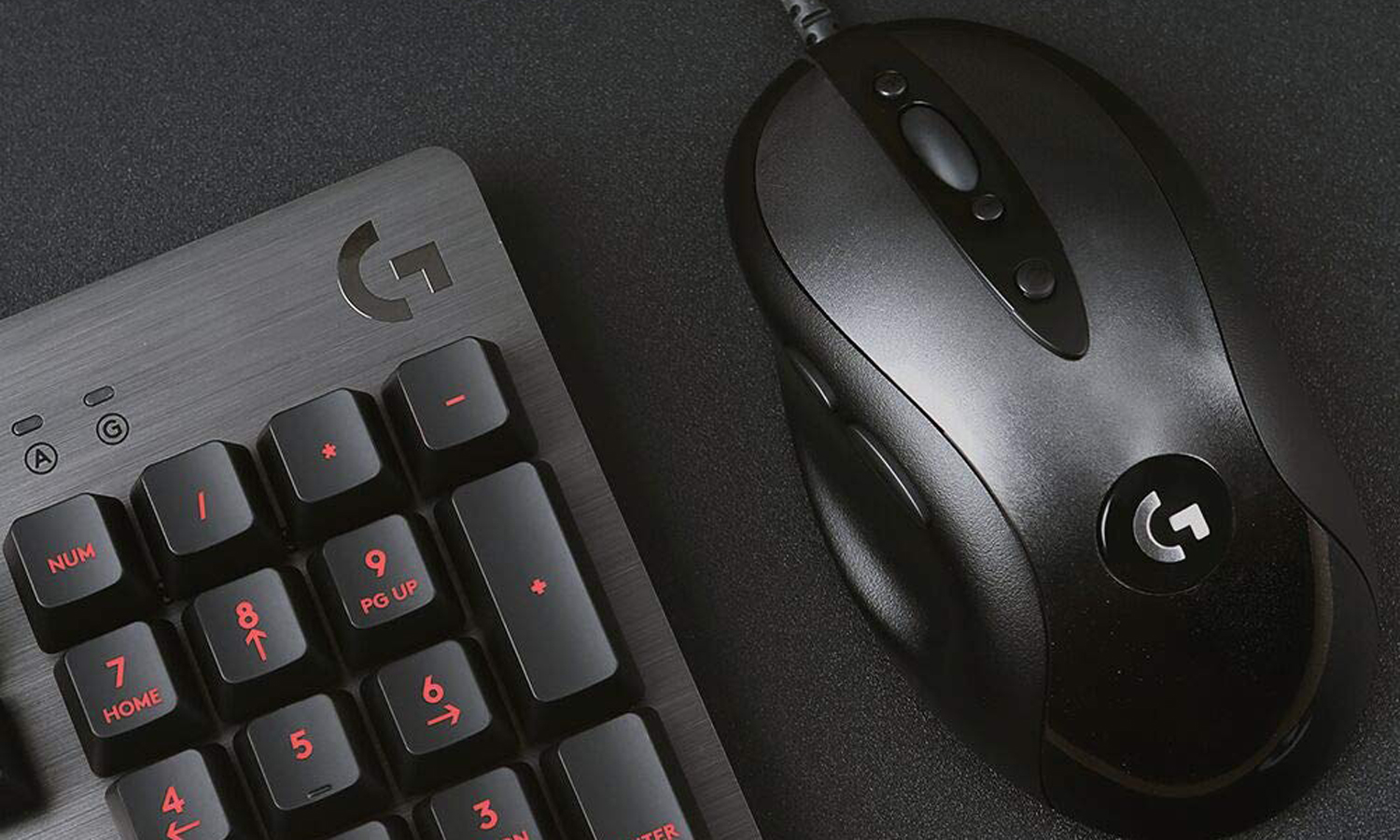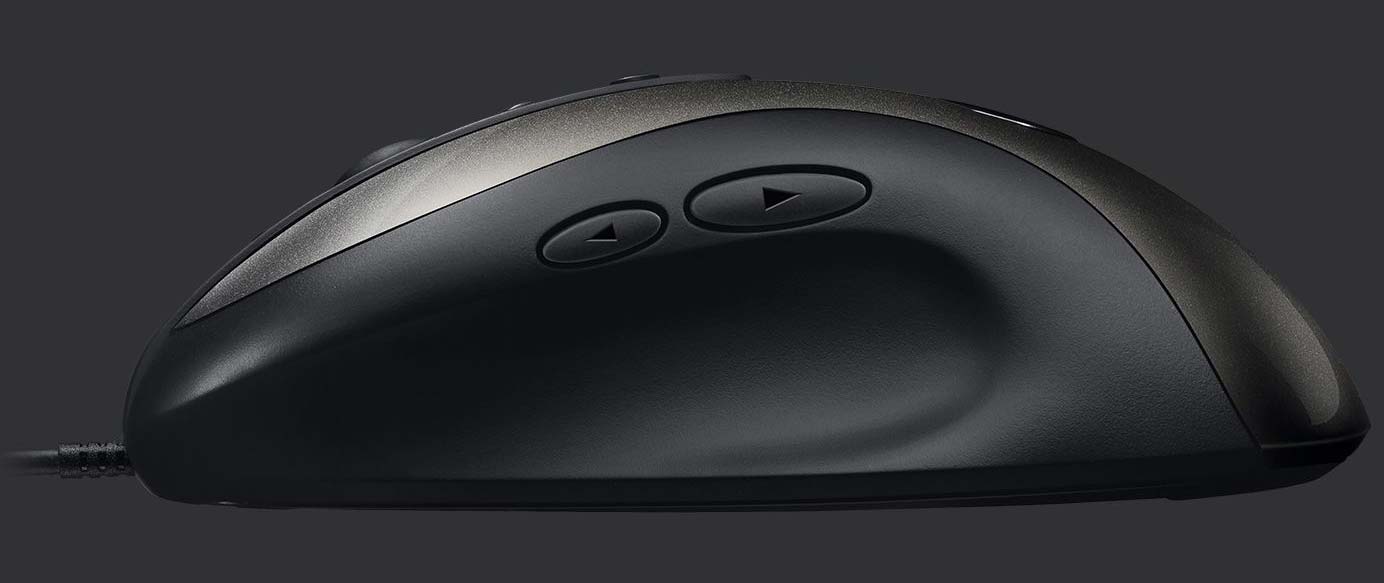Logitech's Classic MX518 Gaming Mouse Gets Nostalgia Right
The best way to put Logitech's retro MX518 gaming mouse to the test was to try it with some nostalgic games.

Before 1999, there was no such thing as a gaming mouse; before 2005, gaming mice were a niche concept, with outlandish designs. As a result, during the PC game boom of the early 2000s, if you wanted precision, accuracy and control, your best bet was a high-quality productivity mouse. Enter the Logitech MX518, which debuted in 2005, and recently relaunched as a "legendary" edition.

In the last 14 years, the MX518 has become something of a collector's item. Logitech has arguably made better gaming mice since then, but there's something undeniably attractive about this old-school, silver-and-black mouse, which is all circles and ovals rather than the harsh angles of modern gaming devices.
At the same time, the re-released MX518 isn't really here to undo all the design improvements Logitech has made since 2005. I spoke with a Logitech representative, who explained that it's more of a love letter to fans of the original, who are willing to invest $60 in a nostalgic device. As such, we decided that the best way to put the mouse to the test would be to try it with some nostalgic games.
A few key differences
Before we dive into how the MX518 performs, it's important to note that it's not precisely the same mouse you may remember from 2005 — but it's pretty darn close. The old version had silver thumb buttons and a Logitech logo in the center; this one has black buttons and a Logitech G logo in the center. (I can't pledge that the materials are exactly the same, either, but the mold is.)

The biggest difference, of course, is the HERO optical sensor, which is a big upgrade from the original model's fixed 800 DPI. Naturally, the new MX518 also works with the Logitech G Hub software, whereas the idea of dedicated peripheral software would have been a tough sell 14 years ago.
Other than that, Logitech's fidelity to this old, beloved design is remarkable. Part of me thinks we've made some great strides in gaming peripherals since the early 2000s, and part of me thinks that maybe we've overcomplicated things.
The classics
Since the MX series enjoyed immense popularity from 2002 to 2005, I thought the best test of the MX518's capabilities would be to see if it could still handle some of the most popular games from that time period. After all, if Logitech is going for a retro aesthetic and a retro audience, the peripheral should be able to handle a few retro titles.
Get instant access to breaking news, the hottest reviews, great deals and helpful tips.

In 2002, Blizzard released Warcraft III: Reign of Chaos, which, in any just universe, would have had an in-genre sequel by now. This epic RTS set the stage for World of Warcraft and its myriad expansions by setting up huge characters like Thrall, Arthas Menethil, Sylvanas Windrunner and Illidan Stormrage. The MX518 did a fine job ordering my Orcish army around the map, zooming in and out of the action and homing in on the right buildings for my latest research projects. Thanks to its indented thumb rest and ergonomic grip, I could focus on the long, involved campaign missions rather than what to do with my hand.

Our trip down memory lane continues into 2003, when Max Payne 2: The Fall of Max Payne took the third-person shooter scene by storm. Few games are as stylish or self-confident as the Max Payne series, and the second installment was probably its best-ever mix of style, substance and story. This game let me test the MX518's precision, since it takes a very accurate mouse to gun down a roomful of gangsters while leaping through a window in slow-mo. Film noir aficionados can rest easy: The HERO sensor is both accurate and responsive.
MORE: 15 Cheap Gaming Mice ($25 and Under) Ranked from Best to Worst
Moving on to 2004, the long-running Far Cry series debuted that year. Armed with an arsenal of guns and a truly atrocious Hawaiian shirt, Jack Carver had to gun down a variety of armed goons and mutants in a South Pacific paradise gone wrong. Since Far Cry is a first-person shooter, aiming precisely is the key to victory, which is why I was a little bummed to discover that the mouse sensitivity was turned way up by default. (Remember, though; mouse DPI used to be a lot lower back in the day, and software had to compensate.)
But that's where the MX518's three DPI buttons came in handy: DPI up above the scroll wheel, DPI down below the scroll wheel and a DPI shift (like a sniper button on a newer mouse) above the palm rest. By modern standards, the design is a little jarring, but back in the early 2000s, being able to change DPI on the fly was almost unheard of.
The MX518 did a fine job ordering my Orcish army around the map, zooming in and out of the action and homing in on the right buildings for my latest research projects.
Finally, 2005 brought us the criminally underrated Star Wars: Knights of the Old Republic II: The Sith Lords on PC. Since the game is an RPG where you can pause and issue orders at any time, split-second responsiveness isn't that important — but extra programmable buttons are, so that you can have special skills and frequently used subscreens right at your fingertips. Scrolling through menus to equip items wasn't all that exciting, but the MX518 let me do it quickly enough to jump right back into the intense dialogues and lightsaber fights.
Modern sensibilities
Just to make sure the MX518 plays nicely with modern games, I also ran it through a little bit of Destiny 2, Overwatch, StarCraft: Remastered (although this might technically be even more retro than the other games I tested) and a few others. As a comfortable mouse with a precise sensor, the MX518 performed very well, making it a perfectly good choice for anyone who's in the market for a new gaming mouse, nostalgic or not.
MORE: Best Gaming Mouse - Top Mice for FPS, MMO and Wireless
And that's ultimately the most interesting question about the MX518. I think it does a good job of re-creating a classic peripheral, but does it have anything in particular to offer gamers who aren't already in love with its design? It's a good mouse, but no better than any of Logitech's other gaming devices — although it is a little cheaper, which is a nice incentive.
I can at least say that the MX518 is a good-looking mouse that runs as well as any of Logitech's other gaming peripherals. And if you want to use it exclusively to play games from 15 years ago, that's fine with us. It was a simpler time for gaming, if not necessarily a better time.
Credit: Logitech

Marshall Honorof was a senior editor for Tom's Guide, overseeing the site's coverage of gaming hardware and software. He comes from a science writing background, having studied paleomammalogy, biological anthropology, and the history of science and technology. After hours, you can find him practicing taekwondo or doing deep dives on classic sci-fi.
